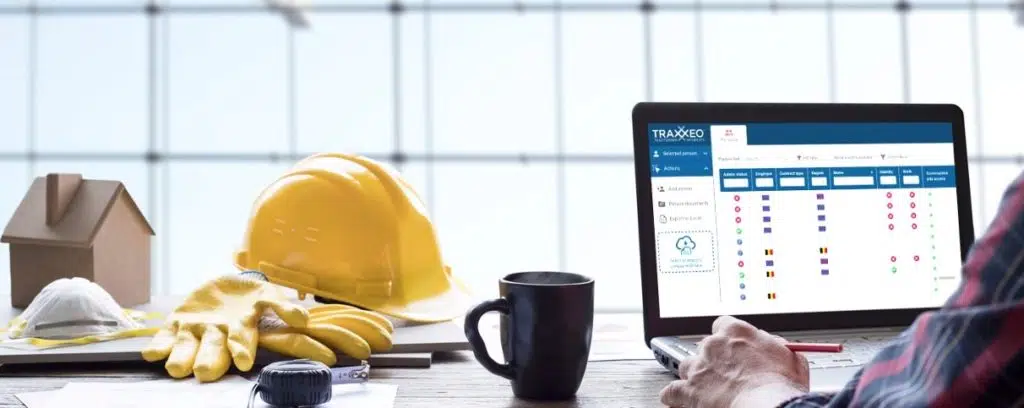Improve Your Workflow: Construction Document Management Made Easy
Improve Your Workflow: Construction Document Management Made Easy
Blog Article
Enhancing Operations Efficiency: Designer's Expert Strategies for Building And Construction File Monitoring
In the realm of architectural style and building, the thorough management of papers stands as a cornerstone for task success. These strategies not just make certain smooth project progression however additionally hold the crucial to opening boosted efficiency and accuracy in the intricate world of building and construction file administration.
Secret File Company Methods
When handling construction papers, among the crucial methods that designers employ is developing a systematic and reliable company system. This system usually entails categorizing documents based upon their kind, such as illustrations, specifications, agreements, and allows. By creating clear and distinct groups, designers can rapidly situate details info when needed, saving time and lessening mistakes in the construction procedure.
Within each category, architects even more arrange records by creating subfolders or utilizing numbering systems to signify alterations or variations (construction document management). This hierarchical structure ensures that the most pertinent and current information is easily accessible while preserving a record of adjustments made throughout the task timeline
Additionally, architects typically utilize digital record management platforms that supply functions like keyword search functions, version control, and accessibility constraints to improve company and collaboration amongst project stakeholders. These tools streamline the document retrieval process, promote real-time updates, and facilitate seamless interaction, eventually adding to the overall success of the building and construction project.
Collaborative System Combination
To maximize document management effectiveness in building projects, engineers seamlessly integrate collaborative systems to boost communication and enhance coordination among job stakeholders. By leveraging collective systems such as project monitoring software, cloud-based storage systems, and interaction tools, engineers can create a central hub for all project-related records and communication networks. These platforms enable staff member to access, evaluation, and collaborate on files in real-time, minimizing delays and the threat of errors connected with conventional file management methods.
Joint platform assimilation likewise cultivates openness and accountability within the task group, as all stakeholders have presence right into the most recent job updates and alterations. By systematizing interaction and paper sharing, designers can guarantee that all team members are working from the most up-to-date details, minimizing the possibilities of misunderstandings or conflicts emerging due to outdated files.
Additionally, collaborative platforms make it possible for smooth cooperation in between engineers, specialists, clients, and various other job stakeholders, promoting a much more efficient and natural task operations. By breaking down communication barriers and assisting in information exchange, architects can drive efficiency and advancement in building tasks, eventually leading to effective job end results.
Variation Control Finest Practices
Implementing efficient variation control methods is vital for keeping document accuracy and uniformity in construction jobs. By establishing a clear system for handling revisions, project groups can guarantee that everyone is working from one of the most current paperwork, minimizing the threat of mistakes and inconsistencies throughout the building stage.
Among the crucial ideal techniques for version control is to assign one-of-a-kind identifiers per file version. This can be attained by making use of a numbering system or day stamp that clearly shows the order of modifications. By clearly labeling each model, employee can easily track the progression of the record and recognize one of the most recent variation.

Automation Devices for Performance

Paper control software application, like Procore or PlanGrid, systematizes job paperwork, making it conveniently available to all stakeholders. These platforms permit real-time collaboration, variation control, and automated back-ups, securing versus information loss. Furthermore, Building Information Modeling (BIM) software program automates the generation of building and construction drawings and guarantees that adjustments are synchronized across all related documents.
Integrating automation tools with cloud storage space solutions even more boosts ease of access and safety. By automating the document management process, job groups can focus their effort and time on value-adding activities, eventually boosting performance and project outcomes.
Secure Information Administration Solutions
Effectively managing and protecting project information is vital in the construction sector to make certain confidentiality and stability throughout the project lifecycle. Architectural companies can make use of encrypted cloud storage solutions to securely share and save project files with licensed workers.
Additionally, using digital rights monitoring (DRM) devices includes an additional layer of safety by stopping the unauthorized distribution or duplication of job documents. Regular information back-ups are necessary to minimize the threat of information loss because of unexpected situations like hardware failures or cyber-attacks. Collective systems with built-in protection functions allow smooth interaction and data sharing among task staff member while keeping information honesty.
Conclusion
Finally, implementing vital record company strategies, incorporating joint platforms, exercising version control best methods, using automation tools, and embracing secure information management solutions are crucial approaches for boosting operations efficiency click now in building and construction record monitoring. These skilled methods can streamline processes, improve interaction, make sure accuracy, and maintain information security throughout the construction project lifecycle.
In the world of building layout and construction, the thorough monitoring of records stands as a cornerstone for project success. These techniques not just make sure smooth project progression yet additionally hold the crucial to unlocking improved efficiency and precision in the intricate realm of building record management.
To enhance record administration effectiveness in construction jobs, designers flawlessly incorporate collaborative systems to improve interaction link and streamline sychronisation amongst project stakeholders. These systems allow team participants to access, evaluation, and collaborate on records in real-time, minimizing delays and the threat of mistakes connected with conventional record management approaches.
Using automation tools in construction paper administration dramatically improves efficiency and improves procedures for task groups. construction document management.
Report this page